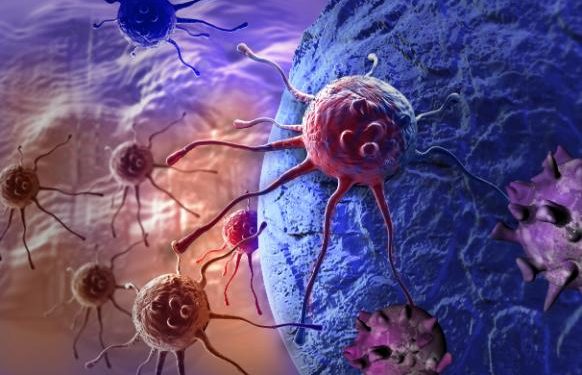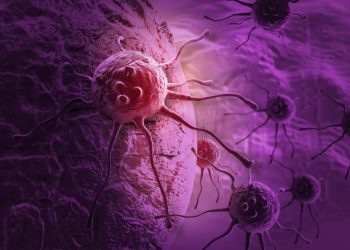Many people with breast cancer do not have any symptoms. However, some women notice changes in the skin on their breasts or nipple. These changes can include a lump or mass, redness or swelling, and dimpling or pain in the breast.
It’s important to be familiar with how your breasts normally look and feel. This will help you recognize any changes and report them to a healthcare professional.
1. Changes in the size or shape of your breasts
Most breast changes are normal. But any change should be checked by your doctor, even if it doesn’t feel serious. Your breasts change naturally throughout your life, usually guided by hormones. This is especially true before or during your menstrual period, pregnancy, nearing menopause and while taking hormones for birth control or menopause. These changes may cause one breast to feel lumpier than the other, or one breast to have a different shape.
If you have pain or tenderness in your breasts, it’s important to let your doctor know. It could be a sign of the less common types of breast cancer, such as inflammatory or Paget disease.
A lump in your breast tissue is also a warning sign, but most lumps aren’t cancer. These lumps are often hard, firm to the touch and don’t get smaller or go away on their own. They can be a symptom of ductal carcinoma, which starts in the milk ducts, or lobular carcinoma, which is more likely to form a cyst or feel like a thicker and harder mass.
Some women have lumps that are a little more painful to the touch or move around, but they’re still not cancer. If you have pain or a lump that is new and doesn’t go away, see your doctor, even if it’s not due to a mammogram.
Almost all types of breast cancer will change the appearance and feel of your breasts, but some may not cause any signs or symptoms in their early stages. Breast cancers that develop between mammograms are called interval cancers, and these are more likely to grow quickly and spread. That’s why it is so important to do monthly self-exams and see a doctor if you notice any breast changes.
2. Changes in the size or shape of your nipples
While most breast changes are not due to cancer, it is important to pay attention and report any suspicious lumps or changes to a doctor. This can help catch breast cancer in its early stages, when it is much easier to treat.
Most painless breast lumps are benign, but if you feel a hard, marble-like lump that feels different from the rest of your breast or armpit and is not getting smaller or changing shape, it should be checked. You should also be aware of nipple discharge that is bloody or not the usual milky white color and only affects one nipple. This can be a sign of inflammatory breast cancer, which is more common in women under 50.
If you are not pregnant or breastfeeding, nipple discharge that is clear or milky in color and only affects one nipple can be caused by a hormone change before your period (menstruation) that causes milk ducts and glands to swell. It can also be a sign of a rare, benign breast condition called Paget’s disease.
If your nipple skin is thicker or has a scaly appearance that looks like orange peel, this is also a sign of breast cancer. It is also important to be aware of skin dimpling, which can be a sign of inflammatory breast disease or some types of cancer that spread to the nipple area. Dimpling skin might feel different to the touch and appear red, itchy or flaky. It may also hurt or have a sharp feeling. Inflammatory breast cancer can cause a buildup of lymph fluid that results in nipple swelling and a pitted or orange-like appearance to the skin.
3. Changes in the shape or size of your lymph nodes
Your lymphatic system has three major functions: it protects you against infections, helps drain fluids and absorption of fats, and helps your body fight off cancer. If any of these systems become abnormal, your body is trying to warn you about potential dangers. Changes in the shape or size of your lymph nodes, for example, are one of those warning signs.
The lymph nodes in the armpit (armpit) and nipple are the largest in the breast area. When cancer cells spread, they often move through your lymph nodes. As a result, the nodes may swell, or you might notice a new lump in your breast or nipple.
Swollen lymph nodes are a sign that your immune system is working hard to fight infection or disease. But, if the lymph nodes don’t go away, it could mean that the cancer has spread to them. The most common symptoms of this include pain or tenderness in your armpit, a feeling of fullness, and nipple soreness or bleeding.
Pay attention to the location and length of time your lymph nodes are swollen. Swollen nodes that last more than two weeks may be an indicator of leukemia or lymphoma, which are blood cancers. Lymph nodes that are swollen in the neck, groin or armpit may be caused by a cancer called Kaposi’s sarcoma, which is a form of cancer that affects the skin and causes them to enlarge.
If your lymph nodes are enlarged, take note of how hard they feel and whether or not they move when pushed. Healthy lymph nodes are rubbery and soft, but if they’re hard and unmovable, it might indicate that they are infiltrated by cancerous cells.
4. Changes in the size or shape of your ribs
Although breast lumps are the breast cancer symptom most women think of first, they’re not the only sign of the disease. Other changes in the size or shape of your ribs can also be a sign of cancer.
The ribs are a bone cage that extends from your back. Normally, your abdominal muscles hold the ribs in place. But if the muscles are weaker, one side of your ribs may stick out or protrude more than the other. If you notice this, talk to your doctor about it. Rib deformities, like pectus carinatum or pectus excavatum, are rare, but they can cause the chest to bow outward or inward. They are usually corrected with braces, but sometimes surgery is needed.
Besides noticing a change in your ribs, pay attention to whether one breast is larger or heavier than the other. This is not normal, especially if it happens suddenly. It can be a sign of cancer in the lining of your breast, or it could be a sign of cancer that has spread to your ribs and other areas of your body.
Some types of breast cancer are more likely to spread to your ribs and other parts of the body than others. One type, called triple-negative, doesn’t have receptors for the hormones estrogen and progesterone and makes very little of a protein known as HER2. This kind of breast cancer tends to grow and spread faster than other types of cancer.
A bloody nipple discharge isn’t always a sign of cancer, but it should be taken seriously if it’s new and occurs only in one breast. It can also be a sign of inflammatory breast cancer or Paget’s disease, which are both rare forms of breast cancer.
5. Changes in the size or shape of your lungs
Breast cancer happens when cells in the breast change and grow out of control. Sometimes, the cancer stays within the breast tissue, but it can also spread to other parts of your body through the lymph system or blood. When the cancer spreads, it’s called invasive breast cancer.
Most people know that a lump in the breast is one of the signs of breast cancer. But, as Dr. Yoga explains, there are other things to keep an eye out for, like changes in the size or shape of your lungs.
Your lungs are one of the largest organs in your body. They’re made of two main sections, or lobes, that each have a network of small passages and air sacs called alveoli. When you breathe in, air moves from your mouth or nose down to the windpipe, then into the bronchial tubes that lead to each lung. These tubes then branch out into smaller passages, or bronchioles, that deliver the air to the alveoli. The alveoli are where oxygen from the air is exchanged with carbon dioxide in your blood.
The most common type of breast cancer is ductal carcinoma in situ, which begins in the milk ducts, or lobules, of the breast. But there are many other types, too, including lobular carcinoma, inflammatory breast cancer, sclerosing adenosis, Paget’s disease of the breast, and a rare type that’s categorized as triple-negative.
The good news is that, if caught early, most breast cancers can be treated successfully. That’s why it’s important for women and men to get regular screenings and to pay attention to any changes in their breasts or nipples. If you’re unsure what a symptom or sign means, talk to your doctor right away.









